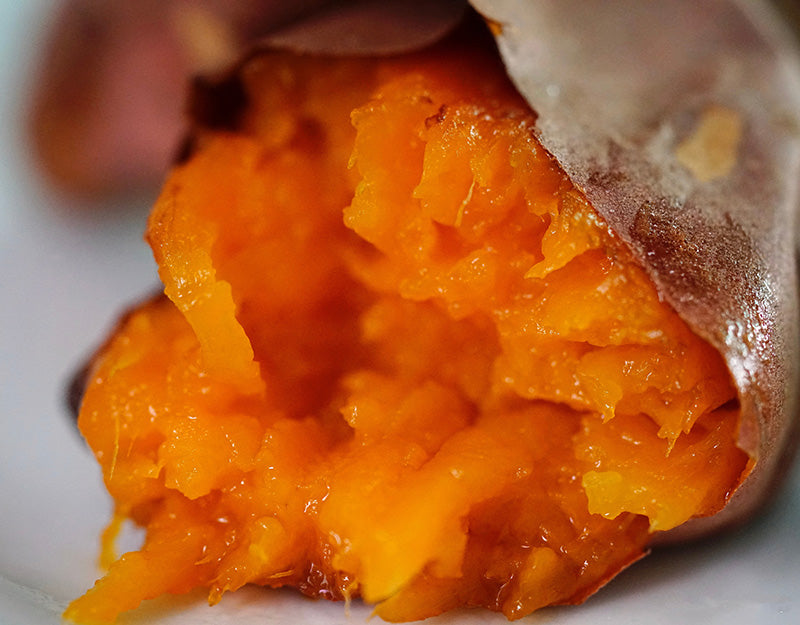
The holiday season is upon us, and now’s the time for delicious seasonal recipes that make this season so special. While we all have our own culinary traditions and family favorites, some things are pretty universal. Among those are sweet potatoes (Ipomoea batatas)—commonly but incorrectly known as ‘yams’—which appear on so many Thanksgiving tables in so many forms. Sweet potatoes are a delicious food, a common garden vegetable, and a plant with a long and interesting history. So as part of our Gardzen Thanksgiving celebrations, let’s dig in and learn all about sweet potatoes, where they come from, and how you can bring them into your own garden.
Like common potatoes (Solanum tuberosum), sweet potatoes are native to the Americas, in particular Central and South America. While there’s some debate about their actual point of origins, the consensus is that sweet potatoes were first domesticated somewhere between the Yucatan Peninsula and the coast of what is now Venezuela. From these origins, sweet potatoes spread relatively quickly across the Americas and the Caribbean, and from there to the South Pacific, Africa, and eventually Europe. A prolific warm-weather vegetable, the rich flavor and versatility of the sweet potato made them adaptable to many cuisines around the world, and they’ve become a culinary staple in countless nations and cultures.
Part of the reason sweet potatoes are so popular is their nutritional content. To put it simply: sweet potatoes are good for you! They’re rich in beta carotene, which gives them their characteristic color, and contain high levels of protein for a vegetable. They’re also a great source of iron, magnesium, potassium, zinc, and B vitamins. Because sweet potatoes store well—lasting for months under cool dry conditions—in many cultures they’re often an important source of vitamins and minerals during the winter months. As a low-fat, low-cholesterol food, sweet potatoes fit with most health needs as well.

Growing sweet potatoes is fairly easy in many climates, but there are a few things to bear in mind. Sweet potatoes prefer relatively warm weather, thriving when temperatures are around 75F (24C), so it’s best to plant them in the spring just after the danger of frost has passed. Bright sunny days, warm nights, and good rain are all critical to get the most out of your sweet potato crop. The good news is that sweet potatoes have few natural pests, so they rarely need pesticides or other bug protection. They’re fairly tolerant of a wide variety of soil conditions, happily growing in poor soil and in a pH range between 4.5 and 7.0. Sweet potatoes can also be grown in containers, but being a root vegetable they do like a relatively large containers and they need place for the vines to run. However, the vines can be trellised and sweet potato leaves are edible. Sweet potato greens taste something like spinach and can be cooked in a similar fashion. Please note: while sweet potato (Ipomoea batatas) greens are edible, the leaves and stems of the common potato (Solanum tuberosum) are toxic to humans and should never be consumed.
So how can you cook sweet potatoes? There are so many recipes and possibilities that they’re difficult to list here and may be the subject of a future article. The easiest basic recipe for sweet potatoes is to bake them. Prick the skins all over with a fork to let steam out and bake in an oven at 350F/177C/Gas Mark 4 until the sweet potatoes are soft enough to easily pierce with a knife or fork. Cut in half and served topped with butter, olive oil, or any combination of toppings you like!

This holiday season, we hope you’ll be celebrating with family and friends. If the feast does include sweet potatoes, you’ll now know a bit more about them and can share some of this information with those around you. We also hope you’ll try growing your own sweet potatoes in the spring, thus making next Thanksgiving that much more delicious with home-grown goodness and a new tradition!

Leave a comment